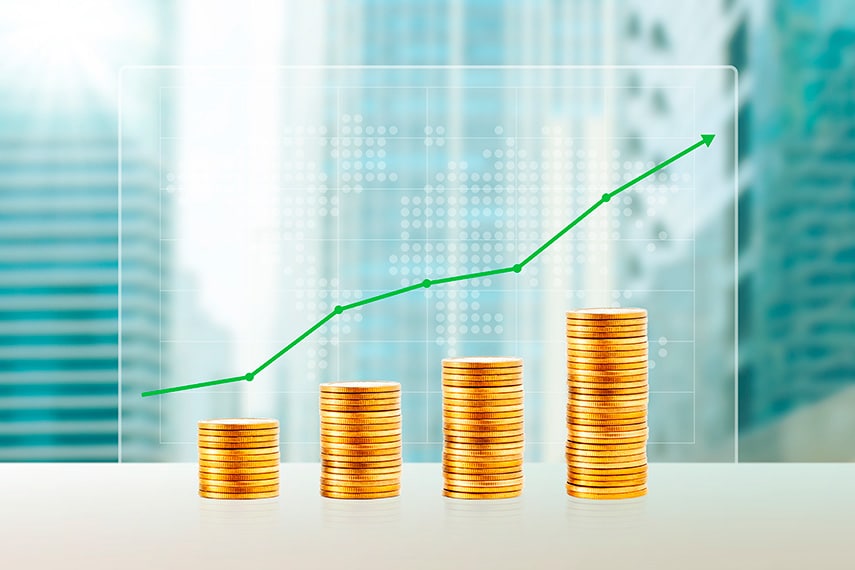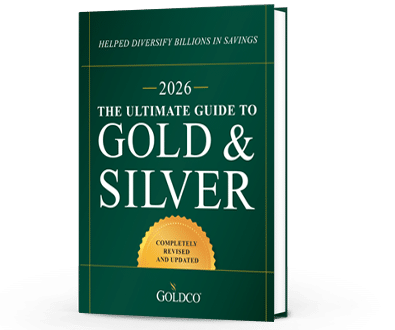6 Indicators of a Potential Recession
It seems that in the media today there are more and more mentions of the dreaded R-word: recession With growing economic uncertainty, the threat of potential recession seems to be growing as...
Economy

Inflation has been a hot topic for several years now. Once mostly ignored when inflation rates were closer to 2% annually, price increases over the past few years have hammered home to many Americans the devastating impact of inflation.
Many Americans started experiencing price increases even before official inflation figures began ticking up. And we were assured by leaders in Washington that inflation wasn’t going to be a problem.
Once inflation numbers started to rise, we were then told that inflation would only be transitory. And then we were told that the Federal Reserve would be able to get everything under control.
To this day inflation remains problematic. And while recent drops in the inflation rate have many people optimistic that the Fed has finally managed to rein inflation in, we’re still not out of the woods yet.
The question that many individuals have is, what effect will the inflation rate have on gold prices? It seems obvious to most people that higher inflation should have an effect on the gold price and rising inflation should lead to a higher gold price, but do the numbers bear that out?

It’s important to distinguish between the original definition of inflation and the modern definition of inflation. Traditionally, inflation was defined as an increase in the money supply. The effect of inflation, all other things being equal, was higher prices.
Today, that original definition of inflation has been all but forgotten, and the effects of inflation are now conflated with inflation itself. So when most financial commentators discuss inflation, they’re talking about the general increase in prices across the economy.
Even though cause and effect have become confused, the general rise in prices that is now described as inflation still has its roots in money creation. And as more and more money has been created over the past several years, prices throughout the economy have continued to rise.
Many may not understand how inflation affects their assets, and they used to not care. After all, if you’re seeing returns of 8-10% per year on average, do you really pay attention to 2% inflation?
Or if stock markets have a really good year, gaining 30%, how difficult is it to make people aware that their assets are being devalued by 2% every year? But that thinking starts to change once inflation reaches 3%, 4%, or 9% like it did a few years ago.
An inflation rate of 2% may not seem like much, but it means that prices will just about quintuple over the lifetime of the average American. Over the long term, inflation rates have been higher than 2%.
That’s particularly true over the last 50 years, coinciding with the time period after the closure of the gold window in 1971. For decades, the US was on a gold-exchange standard of sorts.
While Americans couldn’t own gold or convert their dollars into gold, foreign governments were able to redeem their dollar holdings for gold from the US Treasury. That was supposed to act as a check on unfettered money creation.
Unfortunately, the US government took advantage of the fact that the dollar was the world’s reserve currency and was trusted to be as good as gold to create more dollars than they had gold backing. The redemption of dollars for gold by foreign governments began to accelerate, and President Nixon closed the gold window on August 15, 1971.
Since that time, inflation rates have increased at an average annualized rate of about 4%. For some reference, a 4% average inflation rate means that prices will increase by a multiple of 23 over the lifetime of the average American.
Something that costs $1 when they are born will cost $23 when they die. That demonstrates the danger of even “low” inflation rates.
The higher inflation rates get, the less valuable assets become. Certain assets no longer make economic sense once inflation is factored in.
That’s particularly true for bank savings accounts, which very often never keep up with inflation over the long term. But in an era in which we’re still dealing with the effects of 15-plus years of abnormally low interest rates, even many types of bonds no longer make sense because their rates of return no longer offer decent inflation-adjusted returns.
Going forward, people will have to really do their homework if they want to find assets that can help them keep pace with inflation.
When it comes to gold and inflation rates, many people want to know whether inflation rates have an effect on gold prices. Conventional wisdom has long said that higher inflation rates often lead to higher gold prices, while lower inflation rates lead to flat gold prices.
Is that really true? Is there a correlation between inflation rates and gold prices?
Let’s look at the data post-August 1971. That allows us a good view of a market-determined gold price, one which the US government was no longer trying to overtly control.
Here’s a look at the government’s official CPI (consumer price inflation) data, the standard measure of inflation within the economy:
And here’s a look at the London gold price, one of the benchmarks for world gold prices:
At first glance, it doesn’t look like there’s too much correlation. You can see the gold price spike in the early 1980s, the flat market that ensued thereafter, the bull market from the early 2000s to 2011, the fallback, and now the new highs.
Compared to that, CPI growth seems slow and steady. Surely there couldn’t be any correlation?
Yet, in fact, from 1971 to today there has been about an 86% correlation between CPI and the gold price. From 2000 to today, that correlation rises to 92%.
That means that over the long term the gold price and inflation rates are pretty strongly correlated. But what about the short term?
Surprisingly, there is only modest correlation from 2020 to today, only 60%. But that’s probably due to the fact that the gold price has risen much more significantly than CPI since 2020.
While CPI has risen 21% since the beginning of 2020, the gold price has risen 54% since then.
The strong correlation between inflation and gold is the results of the copious amounts of new money and credit that have been pumped into the financial system by the Federal Reserve over time.
This should indicate that, over the long term, increased inflation should lead to correspondingly higher gold prices. Right now gold seems to be outpacing inflation rates.
That could mean either that gold is outperforming, or that inflation is being underreported, or more likely a combination of both.
It should also be pointed out that gold’s price performance over both the short term and long term is significantly better than inflation. The CPI index rose from 40.800 to 313.049 in June 2024, while gold rose from $41.10 to $2,348.47.
That means that gold grew 7.5 times as much as inflation, a reminder that gold has long been a primary means of protecting against inflation. The last 50 years have obviously done nothing to change that view.
If you’re worried about the effect that higher inflation rates will have on your assets, if you’re looking to protect your assets against inflation, and if you’re hoping to secure your retirement savings against anything that may come your way, why look any further than buying gold?
While inflation rates have been falling in recent months, the gold price has continued to rise. Does this indicate a breakdown in the relationship between inflation and gold? Hardly.
Today, falling inflation rates have markets thinking that the Fed has a stronger case to start cutting interest rates and easing monetary policy. That monetary easing could then become inflationary, which would be expected to boost the gold price.
So rather than disproving the relationship between inflation and gold, the falling inflation rates are causing markets to start pricing in the effects of future inflation on the gold price.
Not only can buying gold help protect your assets against the damage done by inflation, it can also help grow the value of your assets over the long term.
With a gold IRA, you can roll over existing retirement assets from tax-advantaged accounts such as a 401(k), IRA, TSP, or similar account into physical gold coins or gold bars. That gold IRA gives you the same tax advantages as any conventional IRA, but allows you to purchase physical gold coins and bars, something that conventional IRAs don’t allow you to do.
If you’re looking to protect your retirement assets, isn’t it time to look into a gold IRA? Why wait until recession hits and gold rises even further in price?
You’ve seen the numbers on gold vs. inflation and now it’s time for you to make a decision about your portfolio. With inflation still not under control, don’t let your hard-earned savings and assets lose even more value to inflation.
Call Goldco today to learn more about how you can protect your retirement savings with gold.
This article was originally published in October 2020 and was updated in July 2024.

